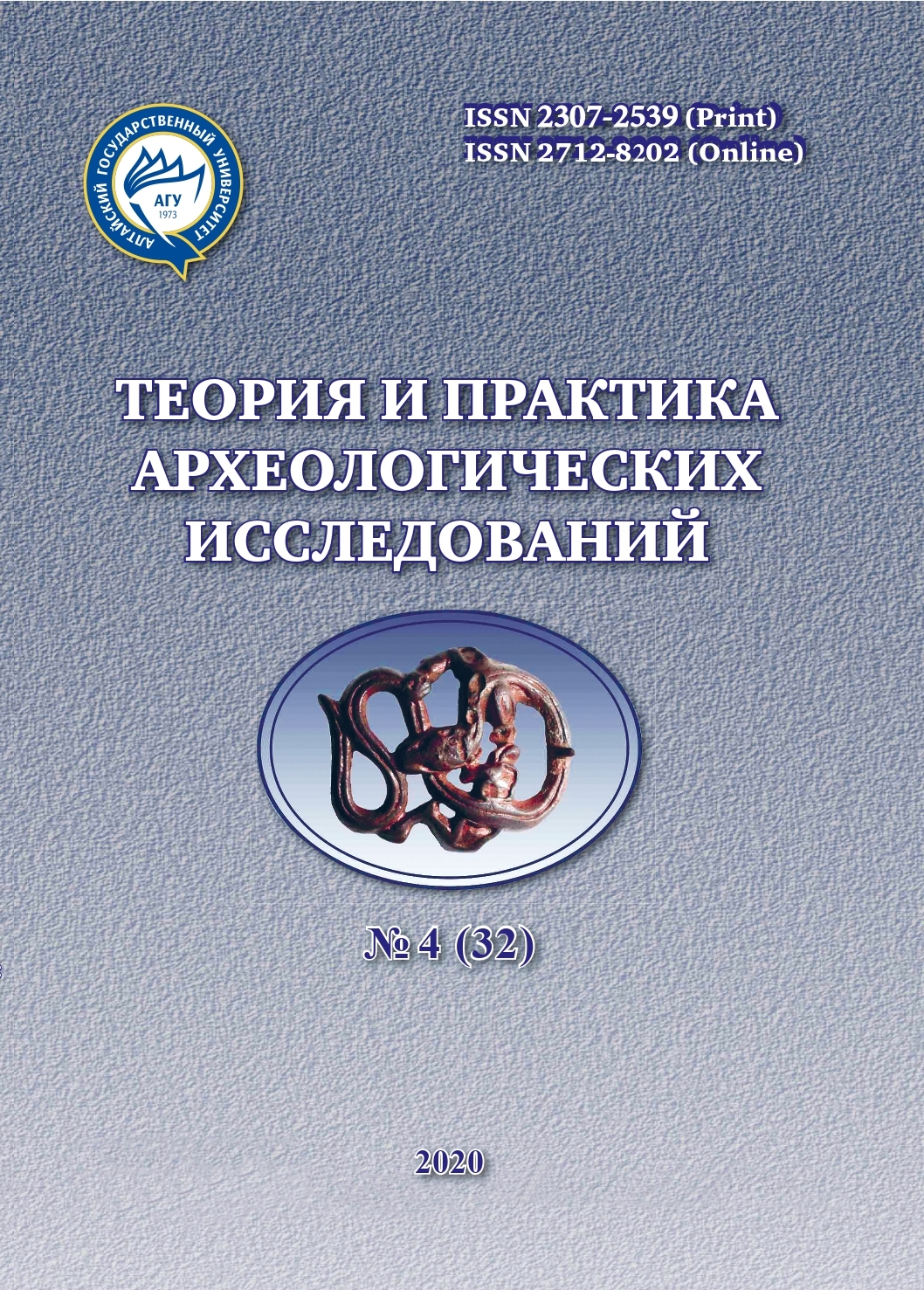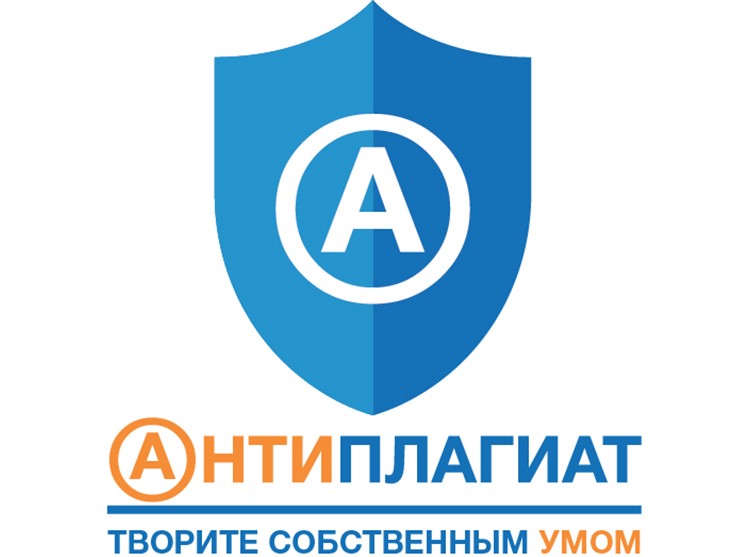BLADE PRODUCTION IN THE STONE INDUSTRY OF THE UPPER PALAEOLITHIC SITE TRI SKALY (Western Transbaikalian)
Abstract
In 2015 the investigations on a new multi-layered archaeological site named Tri Skaly started. The analysis of the stone artifacts showed that lithological layers 3–5 contains the homogenous materials‑ typical to the early stage of the Upper Palaeolithic in the Western Transbaikalia. Materials under consideration include such important component of the primary knapping as blades and cores used for blade production. The first results of the investigations showed that the industry of the Tri Skaly site is among the industries combined into Tolbaga Palaeolithic culture which is characterized by the prevailing of the making tools from stone blades. This article is devoted to the consideration of the blade component in the stone industry of the 3–5 lithological layers of the Tri Skaly site which is situated in the central part of the Selenga Highlands. Based on the studies carried out, it has been established that the typology and morphology of the main groups of stone artifacts of the Tri Skaly in most parameters are similar to the materials of such sites of the early Upper Paleolithic of Western Transbaikalia as Tolbaga and the Eastern Podzvonkoy complex. A significantly smaller number of blades of the Tri Skaly is noted in comparison with the ones from Tolbaga and the Eastern Podzvonka complex, converted into tools or used as tools without preliminary retouching. Presumably, this may be due to the specifics of the excavated area, where primary knapping was mainly carried out.
Downloads
Metrics
No metrics found.
References
Antonova Yu.E., Tashak V.I. Syr’evoj sostav kamennoj industrii paleoliticheskih sloev stoyanki Tri Skaly (Zapadnoe Zabajkal’e) [Raw Material of Stone Industry in Palaeolithic Layers at the Tri Skaly Site (Western Transbaikal)]. Drevnie kul’tury Mongolii, Bajkal’skoj Sibiri i Severnogo Kitaya [Ancient Cultures of Mongolia, Baikal Siberia and Northern China]. Vol. 1. Ulan-Ude : Izd-vo BNC SO RAN, 2018. Pp. 13–15.
Vasil’ev S.G., Rybin E.P. Stoyanka Tolbaga: poselencheskaya deyatel’nost’ cheloveka na rannej stadia verhnego paleolita Zabajkal’ya [The Tolbag Site: Human Settlement Activity at the Early Stage of the Upper Paleolithic of Transbaikalia]. Arheologiya, etnografiya i antropologiya Evrazii [Archaeology, Ethnography and Anthropology of Eurasia]. 2009. №4 (40). Pp. 13–34.
Geologiya i kul’tura drevnih poselenij Zapadnogo Zabajkal’ya [Geology and Culture of Ancient Settlements of Western Transbaikalia]. D.-D.B. Bazarov, M.V. Konstantinov, A.B. Imethenov, L.D. Bazarova, V.V. Savinova. Novosibirsk : Nauka, 1982. 163 p.
Derevyanko A.P., Zenin A.N., Rybin E.P., Gladyshev S.A., Cybankov A.A., Olsen J., Ceveendorzh D., Gunchinsuren B. Tehnologiya rasshchepleniya kamnya na rannem etape verhnego paleolita Severnoj Mongolii (stoyanka Tolbor-4) [The Technology of Early Upper Paleolithic Lithic Reduction in Northern Mongolia (the Tolbor-4 site)]. Arheologiya, etnografiya i antropologiya Evrazii [Archaeology, Ethnography and Anthropology of Eurasia]. 2007, Vol. 29, Is. 1. Pp. 16–38.
Kirillov I.I. Tolbaginskaya paleoliticheskaya kul’tura Zabaikal’ya I eyo korrelyaciya s kul’turami sopredel’nyh territorij [Tolbaga Palaeolithic Culture of Transbaikal Region and Its Correlations with the Cultures of the Neighboring Territories]. Istoriya i kultura Vostoka Asii [History and Culture of the Asian East]. Novosibirsk : Nauka, 1987. Pp. 69–73.
Konstantinov M.V. Kamennyj vek vostochnogo regiona Bajkal’skoj Azii [Stone Age of the Eastern Region of Baikal Asia]. Ulan-Ude ; Chita : Izd-vo ION BNC SO RAN; ChGPI im. N.G. Chernyshevskogo, 1994. 265 p.
Konstantinov M.V. Paleolit Zapadnogo Zabajkal’ya [Paleolithic of Western Transbaikalia]. Paleolit i mezolit yuga Sibiri [Paleolithic and Mesolithic of the South of Siberia]. Irkutsk : Izd-vo Irkut. un-ta, 1982. Pp. 154–173.
Lbova L.V. K probleme perehoda ot srednego k verhnemu paleolitu (materialy Zapadnogo Zabajkal’ya) [To the Problem of Transition from the Middle to the Upper Paleolithic (materials of the Western Transbaikalia)]. Arheologiya, etnografiya i antropologiya Evrazii [Archaeology, Ethnography and Anthropology of Eurasia]. 2002. №1 (9). Pp. 59–75.
Lbova L.V. Paleolit severnoj zony Zapadnogo Zabajkal’ya [Paleolithic of the Northern Zone of Western
Transbaikalia]. Ulan-Ude : Izd-vo BNC SO RAN, 2000. 240 p.
Meshcherin M.N. O namerennoj fragmentacii plastinchatyh orudij v paleolite Tolbagi [On the Intentional Fragmentation of Blade Tools in the Tolbaga Paleolithic]. Problemy arheologii Severnoj Azii [Problems of Archaeology of North Asia]. Chita : Chitinskaya oblastnaya tipografiya, 1988. Pp. 106–107.
Tashak V.I. Vostochnyj kompleks paleoliticheskogo poseleniya Podzvonkaya v Zapadnom Zabajkal’e [The Eastern Complex of the Paleolithic Settlement Podvonkaya in Western Transbaikalia]. Irkutsk : Izd-vo In-ta geografii im. V.B. Sochavy SO RAN, 2016a. 185 p.
Tashak V.I. Plastiny v industrii sloya 7g paleolithicheskogo mestonahozhdeniya Barun-Alan-1 v Zapadnom Zabaikal’e [The Blades in the Industry of Layer 7g of the Paleolith Site Barun-Alan-1 in Transbaikalia]. Teoriya i praktika arheologicheskih issledovanij [Theory and Practice of Archaeological Research]. 2018. №4 (24). Pp. 39–54.
Tashak V.I. Plastiny v material’noj kul’ture Vostochnogo kompleksa Podzvonkoj (Zapadnoe Zabaikal’e) [Blades in Material Culture of East Complex Podzvonkaya (Western Transbaikal)]. Drevnie kul’tury Mongolii, Bajkal’skoj Sibiri i Severnogo Kitaya [Ancient Cultures of Mongolia, Baikal Siberia and Northern China]. Krasnoyarsk : Izd-vo Sibirskogo federal’nogo universiteta, 2016b. Vol. 1. Pp. 88–94.
Tashak V.I., Antonova Yu.E. Tri Skaly – novoe arheologicheskoe mestonahozhdenie v Zapadnom Zabajkal’e (predvaritel’noe soobshchenie) [Three Rocks – a New Archaeological Location in Western Transbaikalia (preliminary report)]. Evraziya v kajnozoe. Stratigrafiya, paleoekologiya, kul’tury [Eurasia in the Cenozoic. Stratigraphy, Paleoecology, Culture]. 2016. Issue 5. Pp. 145–152.
Derevianko A.P., Rybin E.P., Gladyshev S.A., Gunchinsuren B., Tsybankov A.A., Olsen J.W. Early Upper Paleolithic Stone Tool Technologies of Northern Mongolia: The Case of Tolbor-4 and Tolbor-15. Archaeology, Ethnology and Anthropology of Eurasia. 2013. Vol. 41, Is. 4. P. 21–37. doi:10.1016/j.aeae.2014.07.004
Zwyns N., Gladyshev S.A., Gunchinsuren B., Bolorbat Tsedendorj, Flas D., Dogandžić T., Tabarev A.V., Gillam J.Ch., Khatsenovich A.M., McPherron Sh., Odsuren D., Paine C.H., Purevjal K.-E., Stewart J.R. The Open-Air Site of Tolbor 16 (Northern Mongolia): Preliminary Results and Perspectives. Quaternary International. 2014. Vol. 347. Pp. 53–65. Doi: https://doi.org/10.1016/j.quaint.2014.05.043/
Zwyns N., Lbova L.V. The Initial Upper Paleolithic of Kamenka site, Zabaikal Region (Siberia): A Closer Look at the Blade Technology. Archaeological Research in Asia. Volume 17, March 2019. Pp. 24–49.
Theory and Practice of Archaeological Research is a golden publisher, as we allow self-archiving, but most importantly we are fully transparent about your rights.
Authors may present and discuss their findings ahead of publication: at biological or scientific conferences, on preprint servers, in public databases, and in blogs, wikis, tweets, and other informal communication channels.
Theory and Practice of Archaeological Research allows authors to deposit manuscripts (currently under review or those for intended submission to ABS) in non-commercial, pre-print servers such as ArXiv.
Authors who publish with this journal agree to the following terms:
- Authors retain copyright and grant the journal right of first publication with the work simultaneously licensed under a Creative Commons Attribution License (CC BY 4.0) that allows others to share the work with an acknowledgement of the work's authorship and initial publication in this journal.
- Authors are able to enter into separate, additional contractual arrangements for the non-exclusive distribution of the journal's published version of the work (e.g., post it to an institutional repository or publish it in a book), with an acknowledgement of its initial publication in this journal.
- Authors are permitted and encouraged to post their work online (e.g., in institutional repositories or on their website) prior to and during the submission process, as it can lead to productive exchanges, as well as earlier and greater citation of published work (See The Effect of Open Access).








2.jpg)




